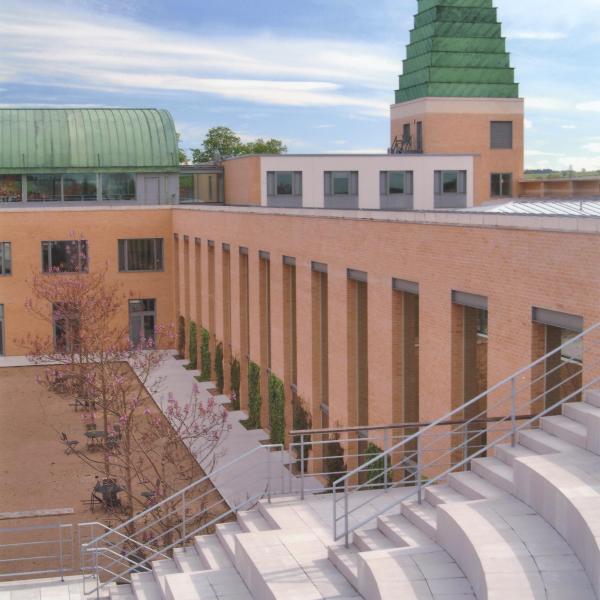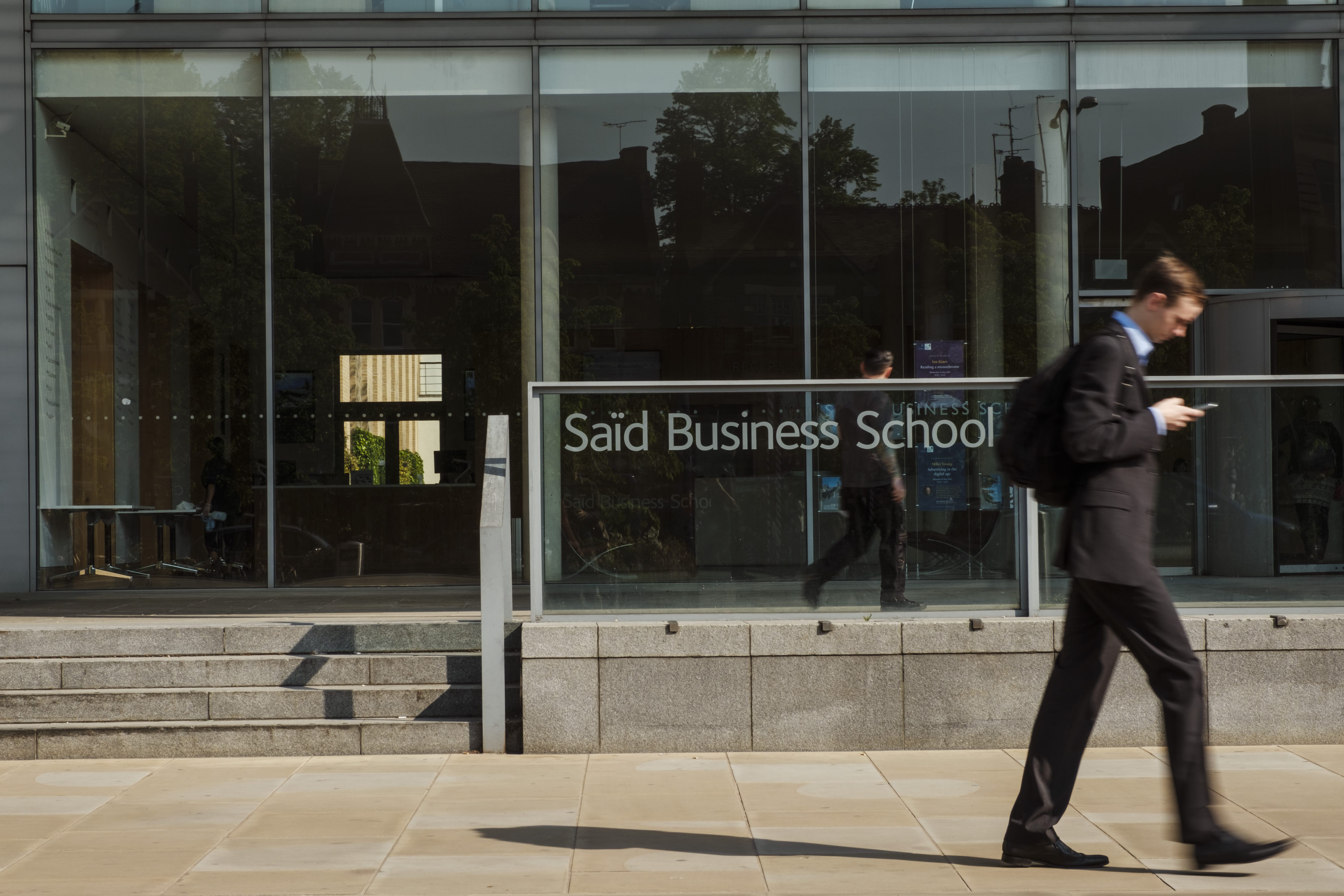Before coming to Oxford, Tim O’Reilly said, he spoke to a device to check that his flight was on time and asked it to book a car to the airport.
The car showed up a few minutes later and his smartphone buzzed to tell him it had arrived.
This is the positive side of recent technological advances. On the other side, it is reported that 47% of jobs are at risk of automation. There is talk of Universal Basic Income as the only way to support humankind in the coming jobless future, in which machines and algorithms will exist only to further enrich a very few.
But, O’Reilly asked, ‘Is there really no work left for humans to do? … As countries industrialise and life spans increase – what is our failure of imagination that we can only see a jobless future?’
O’Reilly was speaking at Oxford Saïd to launch his latest book, WTF? What’s the Future and Why it’s up to Us. He packed a range of ideas into his talk, encouraging us to ask the questions:
- How is work changing?
- What does technology make possible that was not possible before?
- What work needs doing?
- Why aren’t we doing it?
Platforms are economies, and economies are ecologies
O’Reilly borrowed from evolutionary biology to visualise technology as a ‘fitness landscape’. As organisms (or technologies) evolve they are represented as climbing uphill in the fitness landscape until they reach what is known as a ‘local maximum’: peak genetic fitness which may mean that they become a long-lived, stable organism that can survive unchanged for a long time.
Alternatively, they may become extinct as they can no longer adapt. In technology terms, for example, Microsoft has long been at the top of a peak in the PC market. The problem is that it is a good deal easier to get to the top of the next peak from ground level, which is why you see new technologies developing from the margins.
O’Reilly argued that ‘generosity triggers innovation’: the Linux operating system, the World Wide Web, even many components of the iPhone all started with public funding or people working for free. However, waves of innovation like these are eventually captured by extractive companies as they get to the top of the fitness landscape.
Our maps of the world can steer us wrong
When O’Reilly asked the audience how many people used Linux, there was a smattering of raised hands from some geeky-looking types. But when he asked how many used Google, everyone said they did. But ‘If you use Google, you’re using Linux,’ he pointed out. Even today we tend to think of the software we use as what is running on our computer.
If we see only what is immediately in front of us we can make mistakes, such as the early cartographers who perpetuated the belief that California was an island well into the seventeenth century.
Don’t just recreate what went before
Taxi companies feeling threatened by Uber and Lyft are belatedly tacking apps on to their customer offering. But O’Reilly suggested that they are completely missing the point.
Uber has a very different business model, and it is not just down to the fact that it is app-based. At the centre of Uber’s business model is the idea of replacing car ownership with on-demand access to transport. And that access goes both ways: the company itself is accessing the drivers and cars, matching up one marketplace (passengers) with another (drivers plus cars).
As technology changes, people learn new skills and create new kinds of jobs
One of the myths of the industrial revolution is that unskilled factory workers overtook skilled weavers and other craftsmen. O’Reilly argued that the new factory workers were not unskilled but ‘differently skilled’ as they had to operate and maintain the new weaving machines.
As technology evolves, and new kinds of jobs emerge, education and learning become even more important.
Change happens gradually, then suddenly
Artificial Intelligence, algorithmic systems and Augmented Reality may be the future – but they are already here. They are behind systems for flying aeroplanes, medical advice, work shift programming, and avoiding traffic. Some changes happen so quietly we don’t even notice them – O’Reilly cited Google maps as an example of augmented reality, ‘a superpower we did not have before,’ that can guide us exactly where we want to go, letting us know not only our exact position and how long it will take us to get to our destination, but also where the nearest restaurants, hospitals, or hotels are.
This does not mean, however, that we are heading towards a Skynet moment. Even self-driving cars (those feared to be about to replace the millions of people who drive for a living) are not autonomous. They are part of a network that still involves people, a system of machines and humans engaged in ‘a cognitive dance’.
If we harness the power of AI, said O’Reilly, ‘Think of all the things we could do. We could restructure all sorts of positive things in society.’
Artificial Intelligence – we’ll be inside it
In the world of AI, O’Reilly reminded us, programs are the ‘workers’ and programmers are their managers: ‘We’ve all just got promoted.’
Algorithmic systems each have an ‘objective function’. For Uber and Lyft, for example, it is minimising pick-up time; for Google it is relevance; for Facebook, engagement; and for various shift-scheduling systems it is about reducing employee labour costs and benefits.
Just like the djinns and other wish-granters in fairy-tales, programs do exactly what we tell them to do. Djinns seem untrustworthy because wishers frame their wishes wrongly – asking for eternal life rather than eternal youth, for example. Similarly, if AI runs away with us it is because we did not think carefully enough about what we programmed it to do, or we did not anticipate some of the unintended consequences of our actions.
The current problem, O’Reilly said, is that we have to debug the algorithms at the heart of the modern economy, those that prioritised shareholder value and deregulated financial markets. ‘We did not mean to amplify inequality and gut the economy,’ he said, ‘but we did.’ Debugging the system means figuring out what you really told your program to do rather than what you thought you told it to do.’
‘It isn’t technology that wants to eliminate jobs,’ he concluded, it’s the decisions we make about how to apply technology. The critical question is not whether there will be jobs in the future, but how we will find a way to distribute resources and the fruits of machine productivity in order to be able to afford it.

